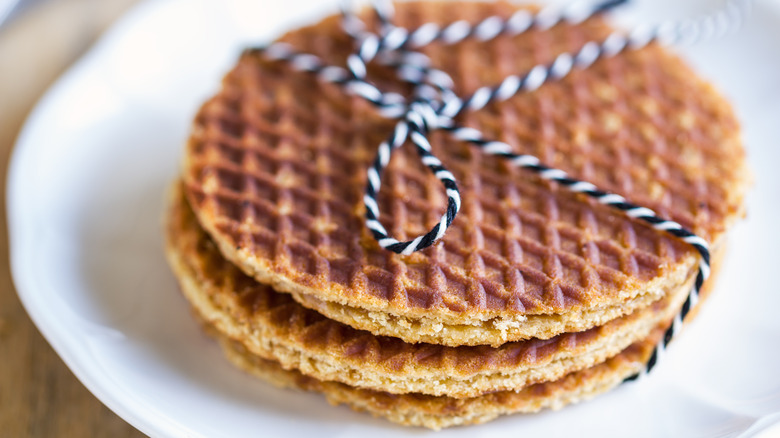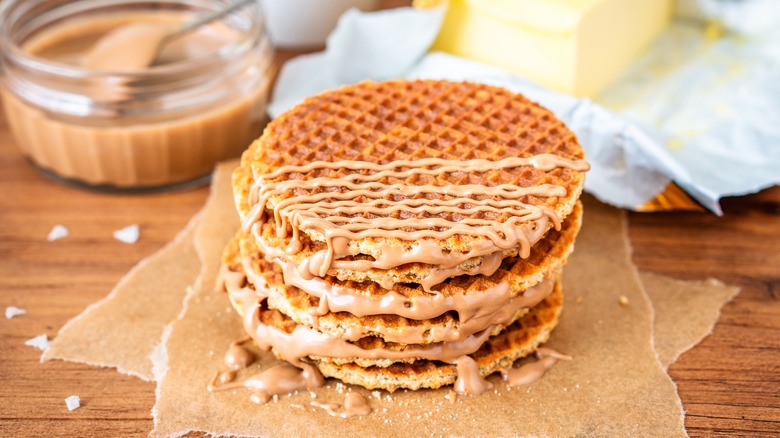Gouda's Famous Stroopwafel Was Created From Bakery Leftovers
Perhaps you've heard of the Dutch Gouda cheese, but did you know this same city in the Netherlands also lays claim to the invention of the Stroopwafel? Stroopwafels are delicious sugary-cinnamon treats that have the pattern of a waffle printed on the cookies' exteriors that sandwich an inside syrupy layer of caramel. As Taste Atlas describes, the circular shape of these cookies fits perfectly on top of tea and coffee cups, so when a hot beverage is poured, the cookie is heated and softened by steam rising from the drink.
The first cookie was made in the 1800s, according to Daelmans Stroopwafels, and has since found favor throughout the world as an enjoyable accompaniment to tea and coffee — or simply enjoyed alone as an uplifting snack.
According to Taste Atlas, we have an inventive and thrifty baker named Gerard Kamphuisen to thank for these treats, as his ingenuity made use of dough from other bakery items to create an affordable snack.
A crumbly beginning
Kamphuisen first baked the waffle cookies with leftover dough and crumbs, then later filled the cookies with syrup, notes Gouda Original. The waffles were sold cheaply at first and were found only in the area surrounding Gouda. As Foodicles explains, Kamphuisen's first batch failed, as the baker tried to make a single wafer using his waffle machine, and his attempt resulted in a crumbly mess. Gradually, Kamphuisen included syrup and molasses to hold the thin waffle pieces together. His effort worked, and by 1870, around 100 bakers in the city of Gouda were cranking out similar waffle cookies.
Light and chewy with a buttery finish, Stroopwafels are now enjoyed not just in the Netherlands but throughout the world. Homemade Stroopwafels are less common but not impossible to find, notes The Dutch Table, and if you can't find Stroopwafels at a specialty market, you can try making your own at home.

